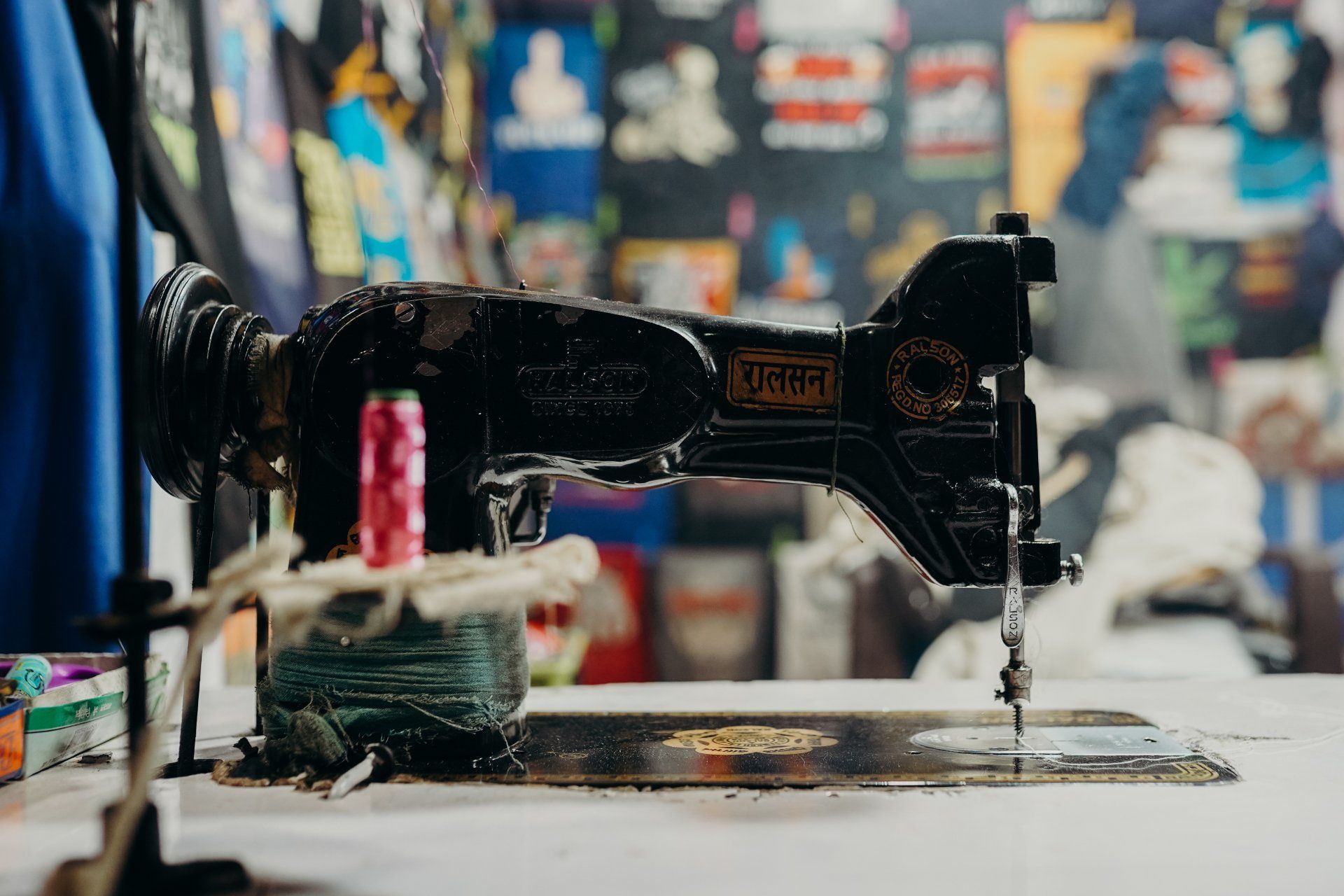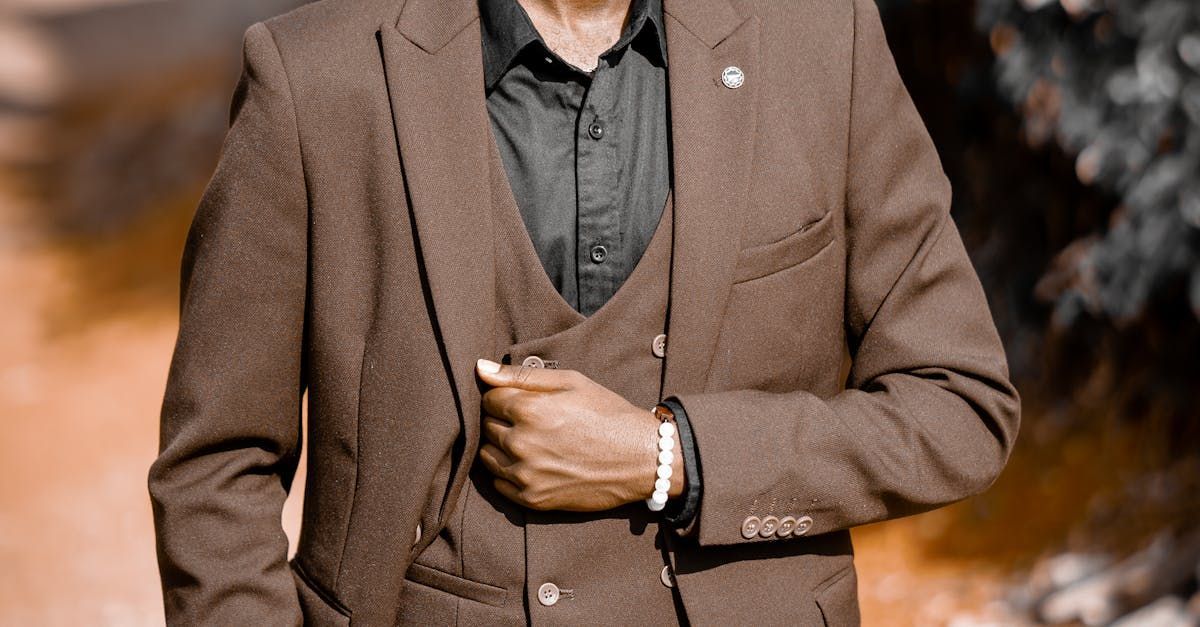Follow Us
Join our newsletter
We will get back to you as soon as possible
Please try again later
The Ultimate Guide to Understanding the Bespoke Tailoring
When most people hear the word "bespoke," they think of high-priced and luxurious items, such as a classic Chanel suit or other name-brand clothing items and accessories that are unique and personalized, unlike anything you'd find in a department store. Nonetheless, we now hear the term "bespoke" thrown around a lot more in common advertisements, often out of context. Interior designers are now using the term "bespoke" to market a new kitchen or a restaurant offering a new meal on their menu.
While "bespoke" does not only refer to clothing, but bespoke tailoring also refers to creating a piece of clothing for an individual. It is typically associated with jackets, suits, tuxedos, etc. The word is associated with luxury or expensive items because making a bespoke garment requires the highest level of skill and material quality, both of which are costly.
Quick History of Bespoke Tailoring
Bespoke suiting is the pinnacle of men's tailoring and the male equivalent of haute couture. To give you some context, bespoke tailoring began over 200 years ago, before the sewing machine, when all garments were constructed by hand. From the Middle Ages to the 18th century, tailors created their patterns using methods kept secret from one another, not even being shared with apprentices until the master tailor retired and handed over their craft. The handwork and craftsmanship were exceptional, and many more fittings were required to achieve a fit that would work for every body type.
By the nineteenth century, London's West End was bustling as the center of bespoke tailoring (becoming what we now know as Saville Rowe), with numerous other tailors from Europe and around the world beginning to share their techniques and becoming the forefathers of what we now see in Italian, Japanese, and French tailoring. With technological advancements and the sewing machine's invention, tailors could streamline the tailoring process, reduce the number of fittings, and achieve unparalleled accuracy. Because of their cost-effective and time-efficient techniques, mass-produced garments and the rise of ready-to-wear and made-to-measure suits grew during this period.
True bespoke tailoring has grown in popularity in the last ten years. There is a significant difference between a bespoke and a made-to-measure suit, though many made-to-measure tailors today muddy the waters and masquerade as bespoke. The patterns are the first and most noticeable difference. After taking your measurements, a bespoke tailor and their master pattern maker can take up to a day to create your patterns from scratch. This immediately focuses on the person's body type, addressing issues before the garment is sewn. A bespoke tailor will hand stitch the garments with meticulous care and precision to achieve the best results.
A truly bespoke suit is distinguished by its high quality. Once your first suit is perfectly fitted, your patterns will be vaulted away for you to use for your next suit, making the bespoke process as efficient as made-to-measure garments while maintaining old-world quality and craftsmanship.
What Is Bespoke Tailoring?
Bespoke tailoring is a traditional method of creating clothing by hand from an individual pattern. A pattern is the construction plan for the various garment parts created with body measurements that consider the human form's asymmetrical shape. This means that a tailor will measure the chest, waist, back, and seat circumferences and the length and circumference of both legs and arms. He will also determine the armholes' exact position and the shoulder slope degree. Furthermore, they will check the front and side balance, which means they will notice whether the customer is bent forward, has a very upright position, or has a very rounded back.
All of these measurements and observations of figure peculiarities (which everyone has) will be used to create the garment pattern, which is usually started by drawing a vertical line on a piece of brown paper. This vertical line represents the jacket's back seam. This line will be slightly curved to conform to the shape of the customer's back from his neck to his seat.
Given the misuse of the term "bespoke," how can you be certain that an offering is truly bespoke tailoring? It's not uncommon for businesses to offer "custom" clothing or even outright sell bespoke clothes made-to-measure. A true bespoke tailor typically makes his clothes in a workshop on his premises, and you will almost certainly work directly with the tailor. Every true bespoke tailor will be happy to show you where his clothes are made, and he should be able to demonstrate a thorough understanding of his craft. Be wary if a manufacturer does not allow visitors into his workshop, if his facilities are remote, or if someone other than the tailor manages client interactions and measurements.
Advantages And Disadvantages of Bespoke Tailoring
Here are some of the advantages and disadvantages of bespoke tailoring:
Advantages
- The tailor fits bespoke clothing at least twice so that the final garment is altered at each stage to better fit your figure.
- Traditional trained tailors cut and sew their clothes by hand, resulting in a better and more comfortable fit.
- If everything goes as planned, a bespoke suit is the best you can get in uniqueness and handmade quality.
- A good bespoke tailor's style, shape, and fit options are nearly limitless.
Disadvantages
- Bespoke clothing requires two fittings, which necessitates the buyer personally being at the tailor's workshop three times; because bespoke work takes time, this could mean staying near the tailor for weeks or making multiple trips to the workshop.
- Because some tailors outsource work to other artisans to save time, the quality of the handwork varies. And, on occasion, these craftsmen or the tailor will be in a hurry, resulting in poor quality.
- Unless you have a reliable recommendation, it is difficult to predict how good the outcome will be if you try a tailor for the first time.
- You must know exactly what you want and be able to communicate your desires. Misunderstandings frequently occur, resulting in significant disappointment and time loss.
What To Expect with Bespoke Tailoring?
If you want to have a bespoke suit, tux, or other outfit made for you, you can do a few things to make the process go more smoothly.
You must conduct extensive research to determine which tailors are capable of such a skill in your area. At the same time, you should read their reviews. You'll also need to know what style you want. You won't waste as much time during the appointment this way.
Keep in mind that the tailor may make some suggestions, so keep your ears and mind open to everything. While they will not force you to choose what they believe is in your best interests, their advice will undoubtedly assist you in making your final decision.
While you can do those things, there are a few things you should not do during your bespoke tailoring appointment. For example, you should not buy something you will not wear frequently. Bespoke garments are costly, and if you plan to wear them only once for a special occasion, bespoke tailoring may not be the best option for you. Furthermore, they are works of art that should be shared with the world rather than sitting in your closet.
The Bespoke Tailoring Process with Isaac Ely
Bespoke tailoring also takes a long time. You won't walk into a tailoring shop expecting your outfit to be finished in an hour. A bespoke piece can take days or even weeks to complete! Why does it take so long? This is because the master tailor must take numerous measurements and construct the garment to ensure a perfect fit. We at Isaac Ely will ensure that your bespoke garment is well worth the wait.
Step 1: Know What You Want
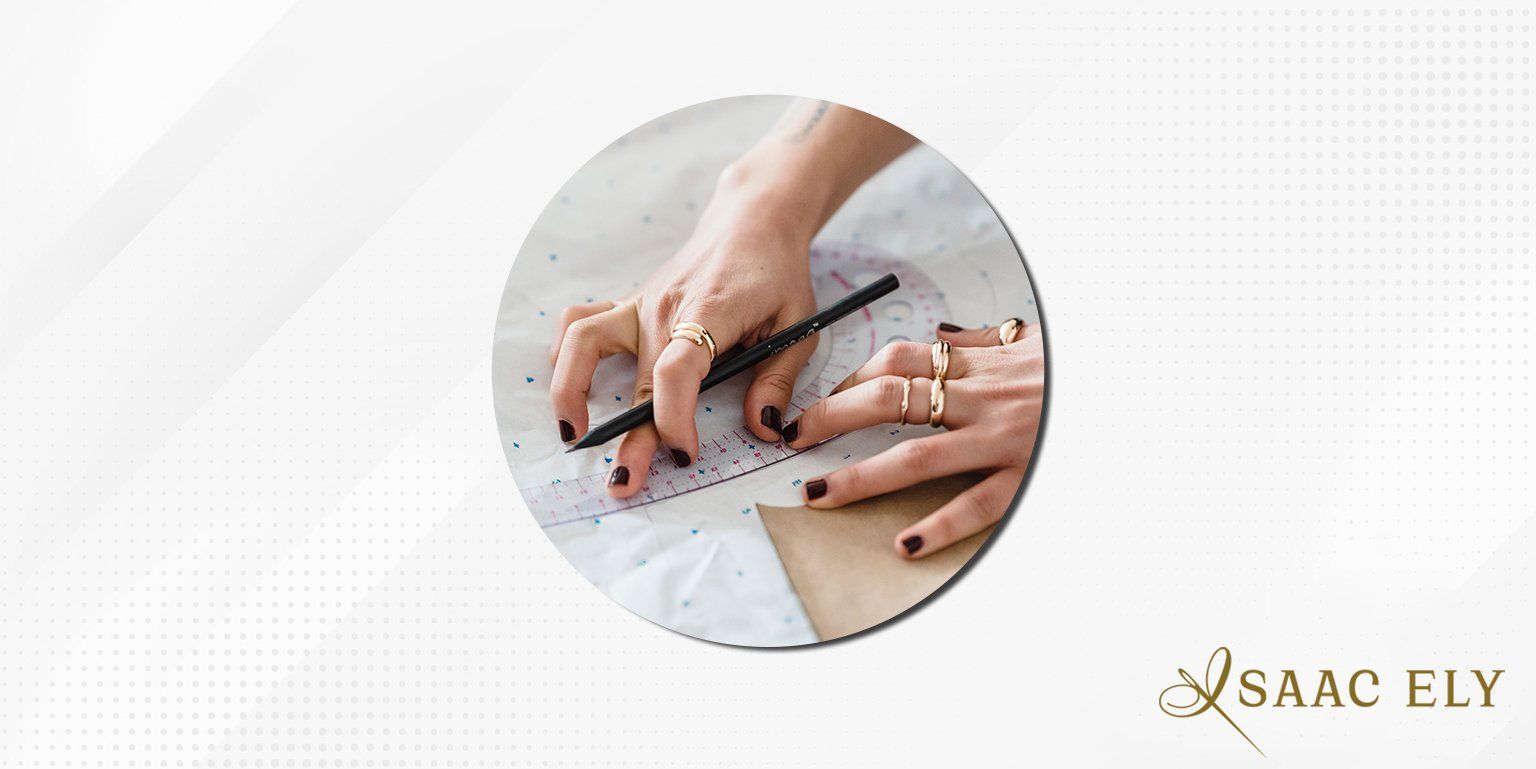
First and foremost, you should decide on the design of the desired garment. Most men will order a suit, but if you have something special in mind, you can also order a single jacket, an overcoat, or a pair of pants. The more someone knows about their tastes and preferences, the easier it will be to decide. Consider all the details you want, such as the garment's cut, fabric, and structure.
Step 2: Choosing Desired Style
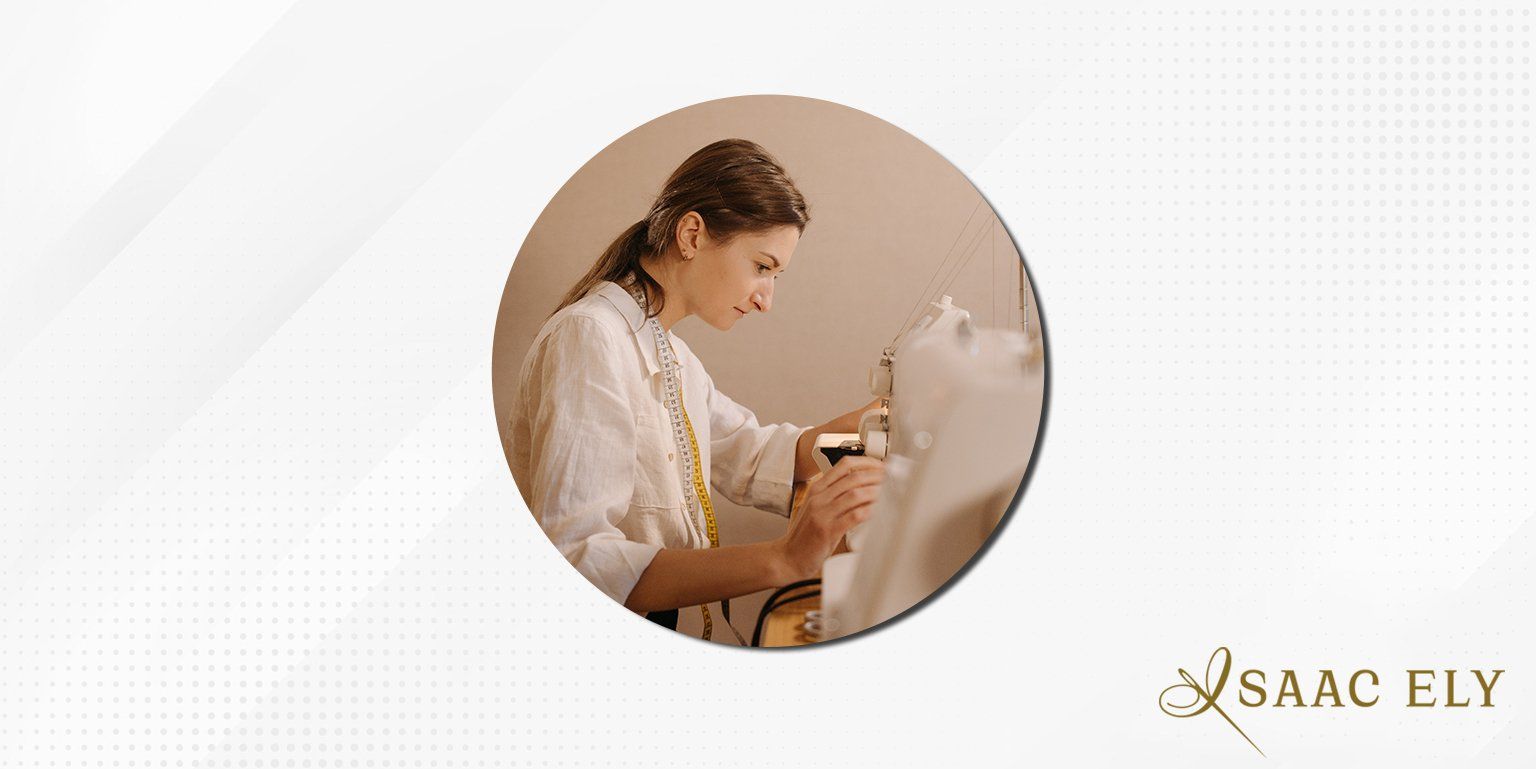
The majority of men prefer either English or Italian fashion. That said, working with a tailor to create a bespoke garment should be about getting what YOU want. If your tastes align with the English or Italian styles, working with a tailor who favors that style makes sense.
In general, knowing what you want and communicating are critical. The more information Isaac obtains, the better, as long as he is capable and willing to adapt to your requirements. In many cases, tailors will nod while you speak but produce a garment very different from what you expected at the first fitting. Choose Isaac Ely if you are unable or unwilling to express your desires precisely.
Step 3: Know Your Budget
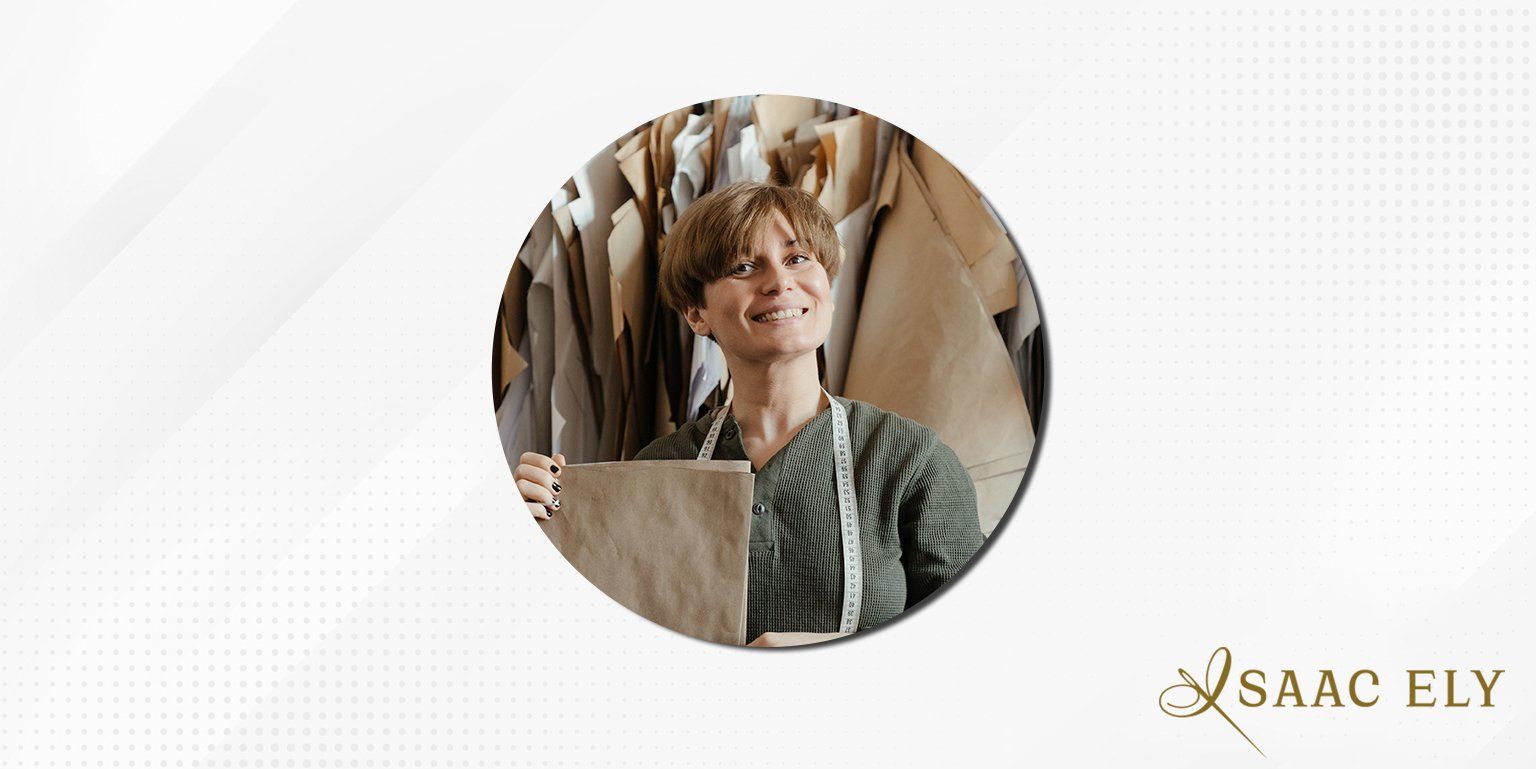
Just because you have a bespoke garment made doesn't mean you have to have an unlimited budget. Nonetheless, traditional bespoke clothing is always more expensive than any other type of clothing. You must decide if you want to spend the money and time on top. Unless you can do the fitting on business trips paid for by your employer, the cost of travel can quickly add up. A local tailor may not be as prestigious as one on Savile Row, but he may be just as good, and you will save a significant amount of money and time.
Step 4: Communicate

Communication is critical throughout the bespoke tailoring process. Even if a person speaks the same language as the tailor, he may find it difficult to express exactly what he wants, even more so when dealing with tailors who speak a language that you either do not speak at all or only speak to a limited extent. Most tailors will be able to communicate in English. So, bring images of sample garments to help you explain your desires. Alternatively, bring a translator who is familiar with tailoring unless you are willing to completely trust a tailor whose style you like or who was recommended.
Step 5: The Process
The First Fitting
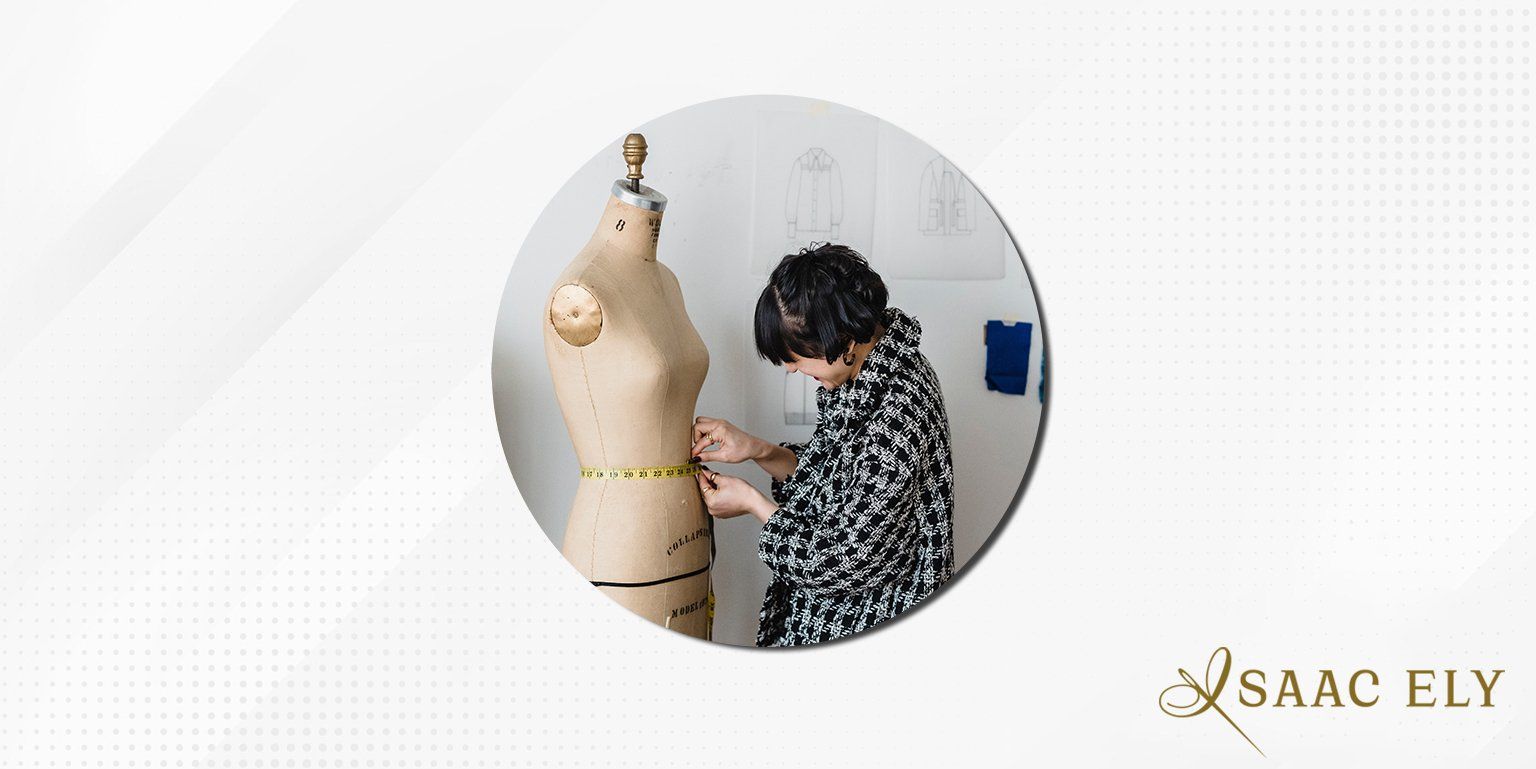
Most bespoke tailors will perform two fittings; very few will perform a single fitting if their existing patterns work well. The fitting allows the tailor and the customer to see how the garment progresses and what additional alterations are required. Pockets are usually not cut in the cloth at the first fitting, but darts are. No buttonholes are made, and the sleeves are frequently missing.
The first fitting is intended for the tailor, not the customer. Nonetheless, the customer will be eager to see the garment at this early stage because he has no idea whether the tailor can deliver what he wants until he slips into it. In very few cases, the customer realizes at this point that he made a mistake by ordering a double-breasted garment. At this stage, you can do a single breast instead. The opposite is possible if new front pieces are made from extra cloth. The pants have a linen waistband that will be replaced after the fitting with a waistband made of the chosen fabric. At this stage, the trousers usually have no buttons or hooks; the tailor will fasten them with a needle.
The Second Fitting
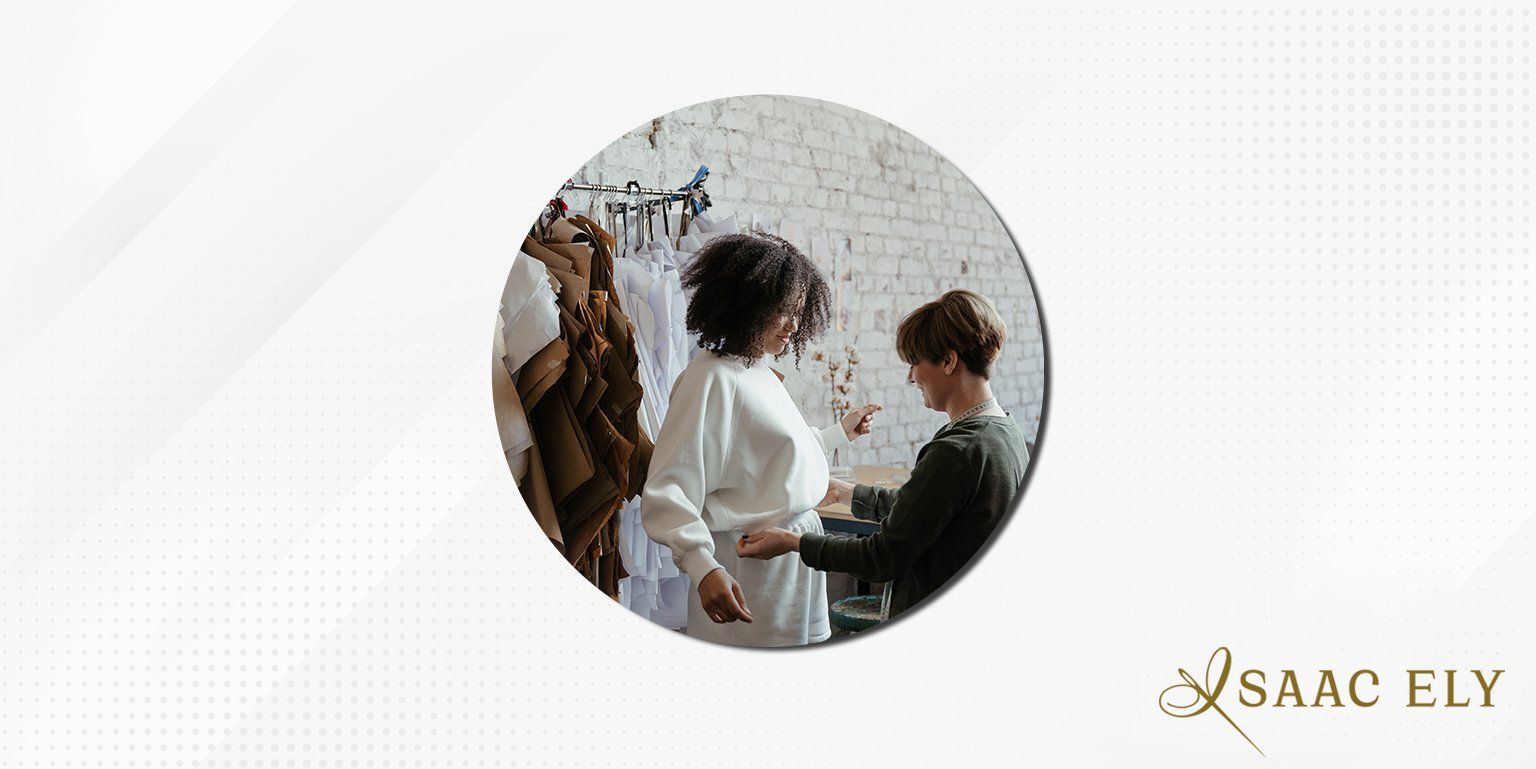
The garment will be disassembled after the first fitting. The cutter will then improve the cut by making minor adjustments or recutting the jacket entirely. Typically, minor adjustments are required, such as changing the shoulders' width, tightening the waist, or adjusting the overall length. Pockets will now be cut, but buttonholes will remain closed. This is critical because adjustments to the balance may result in the buttons on the front not matching the buttonhole. The lining will now be added, and the trousers will be finished with buttons, hooks, and the fly for the second fitting.
If sleeves were not included in the first fitting, they would be added in the second. The garment has advanced significantly by the second fitting. Because the lining would have to be removed, fundamental changes would now take a long time. Nonetheless, alterations are possible, but at this point, the tailor and customer should have a clear idea of the direction they want to take with the suit.
Step 6: Finishing
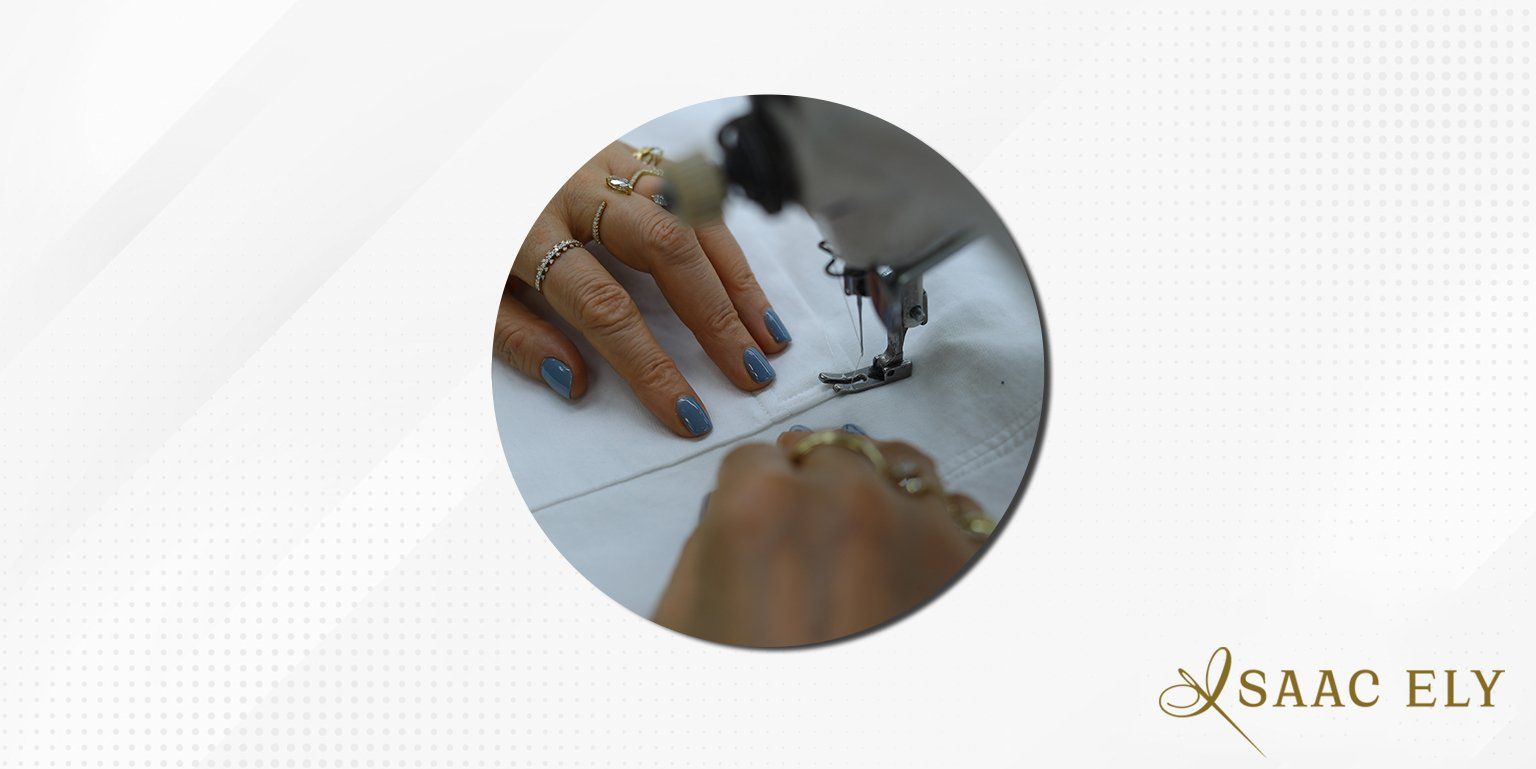
Finishing takes a long time because it requires a lot of very precise stitching, such as hand-sewing the lining. All buttonholes, including those on the fly if it does not have a zip, must be finished by hand.
The final pressing is also included in the finishing. Tailors who produce for distant customers will frequently deliver the finished garment in a box, but most tailors prefer to see the suit on the customer one more time. Despite the second fitting, the finished suit may require minor adjustments. It is not uncommon for the length of the sleeves or pants to be incorrect, which is not a big deal if the customer calls in person to collect the suit but rather inconvenient when he lives 5000 kilometers away.
Frequently Asked Questions
The popular frequently asked questions about bespoke tailoring, and other relevant topics follow. Have a quick look below.
-
What features do you seek in a garment?
A piece of smooth fabric with neat seams and beautiful detailing. Not something about to fall apart. The fabric, seams, lining, tailoring, and even minor details like buttons and pockets determine whether a garment meets these criteria or not.
-
What are garment standards?
Garment construction standards are broad guidelines that govern how well a piece of clothing is constructed, how well it functions, and how it looks.
-
Why should you choose Isaac Ely for your bespoke?
Our network's best expert tailors and sewists deliver top-notch quality with a 100% satisfaction guarantee. Our seamstress professionals will create a custom fit for you, whatever the occasion.
-
What's the difference between bespoke and custom?
These terms, while frequently used interchangeably, are not synonymous. A subset of custom is bespoke. Not all bespoke suits are custom, and not all custom suits are bespoke.
-
Is it worth it to go with bespoke tailoring?
Regarding sustainability, some argue that a bespoke suit looks good because it is typically made locally, with more natural materials, and encourages reuse and repair.
Conclusion
The key to successful bespoke tailoring is knowing exactly what you want and communicating it. If you are unsure of what you want, it is best to postpone hiring a bespoke tailor. If you're unsure if the tailor understands or doesn't like him, don't order anything. Working with a tailor with whom you are not at ease is unpleasant.
It is reasonable to expect a lot after spending thousands of dollars, but remember that bespoke tailors cannot work miracles. They are artisans but not magicians. Many factors will influence the final product, including the material you choose, your posture, and the tailor's experience level. The more you discover bespoke tailoring, the simpler and more enjoyable the process will be!
We hope that this guide will help you to decide what you think is the best for your looks. You can now find more information on our website,
IsaacEly, for more details and designs!
Exceptional Custom Clothing Made for Canadians
Almost everyone has a dream of looking better. For some people, that means losing weight or wearing the latest fashion trends. Others may want to change their hair color or grow out their beard. Whether you’re dressing up for a special occasion or just want to look your best at work every day, having clothing made to measure will give you an edge in any situation. The right fit, exemplary quality and perfect match of design and color is what sets Isaac’s custom-tailored suits and fine clothing apart from ready-to-wear options.
Request An Appointment
Experience the Isaac Ely Difference
-
Guidance
Isaac has been a prominent figure in the apparel industry for over 35 years, specializing in clothing apparel and custom-tailoring. His unwavering commitment to assisting clients is evident in his dedication to ensuring their best interests are met, making him a reliable clothing expert. With Isaac by your side, you can confidently navigate the dynamic world of custom clothing, as his dependability and expertise in bespoke design and craftsmanship will help you make informed decisions.
-
Understanding Clients Needs
We take the time to actively listen and engage with our clients, gaining a comprehensive understanding of their preferences, style, and vision. By doing so, we can identify and anticipate their requirements, enabling us to create bespoke, tailor-made clothing that genuinely resonates with them. This client-centric approach fosters lasting relationships and ensures that every piece we craft aligns with our client's expectations, ultimately leading to their utmost satisfaction.
-
Our Features & Benefits
Applying careful attention to detail, we design our bespoke garments to fit you perfectly, ensuring comfort and style. High-quality materials and expert craftsmanship create durable and timeless pieces that elevate your wardrobe. Moreover, our personalized design process allows you to express your individuality by selecting fabrics, patterns, and design elements that align with your taste. Ultimately, choosing Isaac Ely for your custom clothing means investing in a one-of-a-kind, tailored experience that enhances your appearance and boosts your confidence.
-
Creating Results
We take the time to listen and engage with our clients actively, gaining a comprehensive understanding of their preferences, style, and vision in the context of custom clothing design. By doing so, we can identify and anticipate their requirements, enabling us to create bespoke, tailor-made fashion solutions that genuinely resonate with them. This client-centric approach in the apparel industry fosters lasting relationships. It ensures that every piece we craft aligns with our client's expectations, ultimately leading to their satisfaction and personal styling.
Recommended Posts:
Navigation
Isaac Ely Bespoke and Custom Clothing | All Rights Reserved.
Powered by nerDigital

